What can ballet dancers teach us about balance?

Balance is perhaps one of the things we most often take for granted in daily life. That is, until it’s gone.
Standing still, walking, carrying a coffee cup—all of these things demand that our bodies constantly recalibrate. It’s a graceful dance between the brain and the body, the muscles and the skeleton, to keep us upright, says Dagmar Sternad, a professor of biology and electrical and computer engineering at Northeastern.
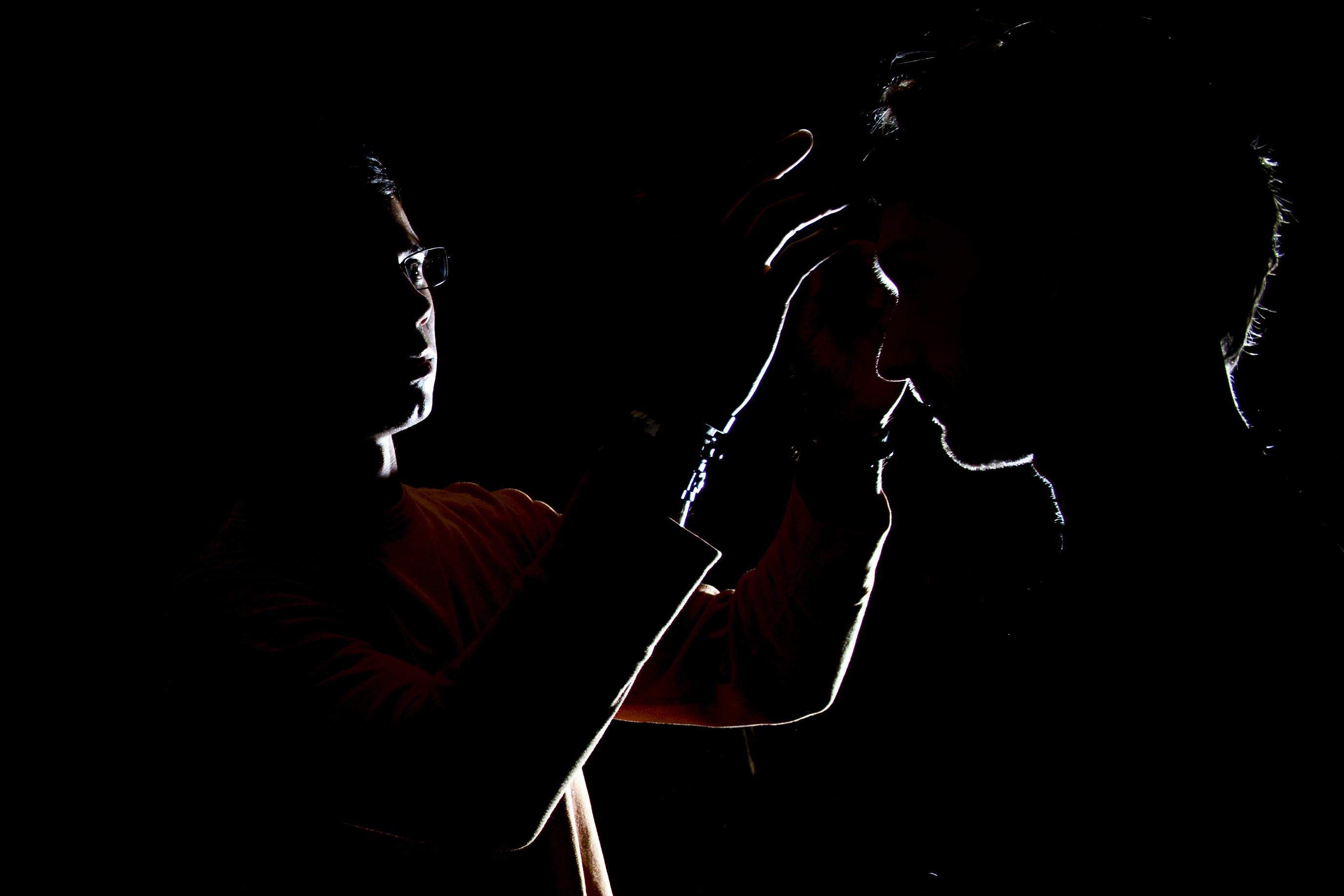
Photo by Adam Glanzman/Northeastern University
But as we age, this dance becomes stiffer, slower; we’re more likely to lose our balance and fall. And understanding what exactly happens, as well as how to help maintain balance with age, “is a bit of an unresolved puzzle,” Sternad said in a recent interview.
Sternad is studying “experts in balance” to understand and map the limits of the balancing human body. She recruited two dancers from the Boston Ballet, and, with the help of postdoctoral researcher Marta Russo, is studying how they balance.
“After all, who is more of an expert in balance than a ballet dancer?” Sternad said, smiling.
One afternoon in January, Patrick Yocum, a principal dancer at the Boston Ballet, and Lauren Herfindahl, a second soloist, were working through the logistics of Sternad’s research while Sternad and Russo placed stickers on their major joints.
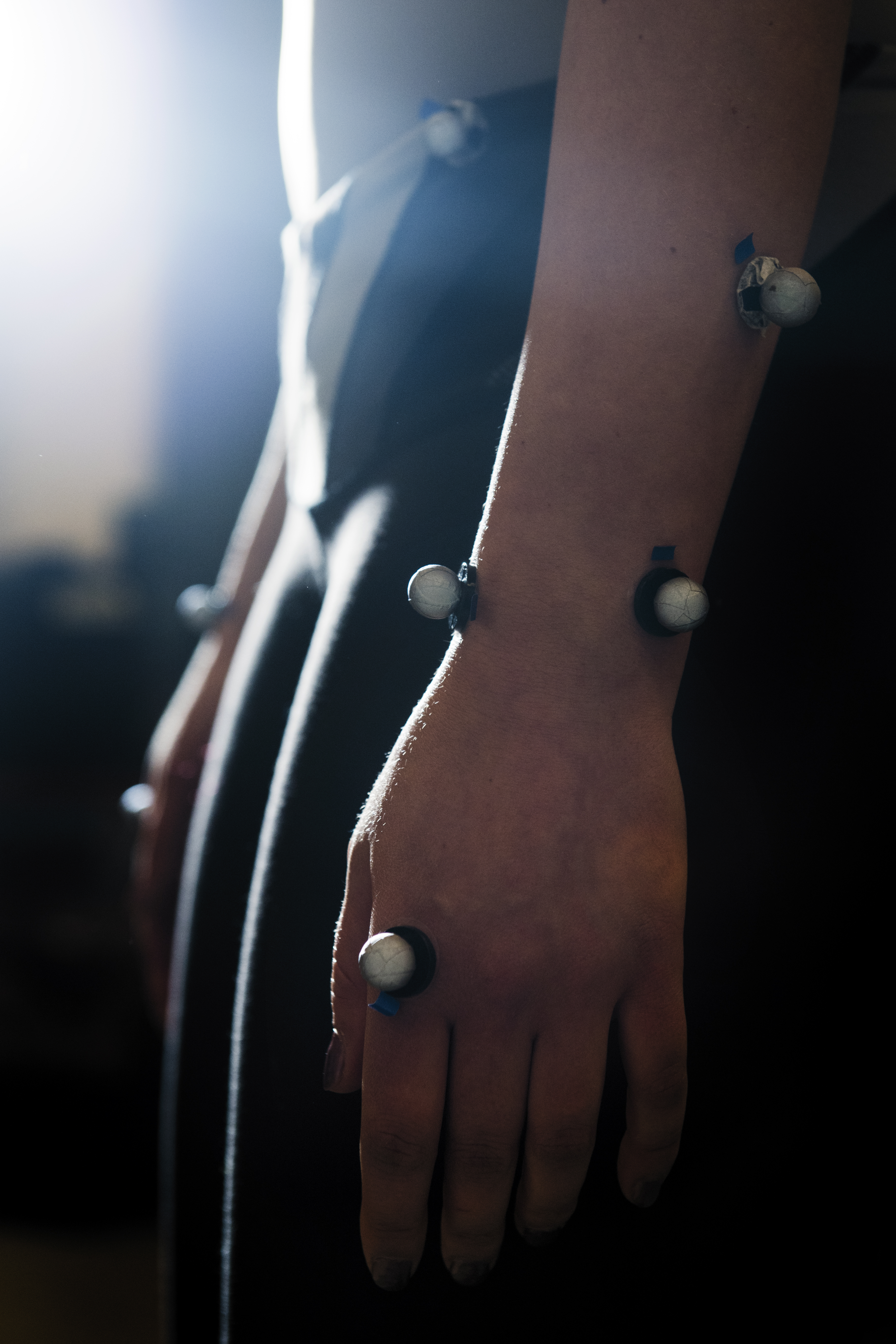
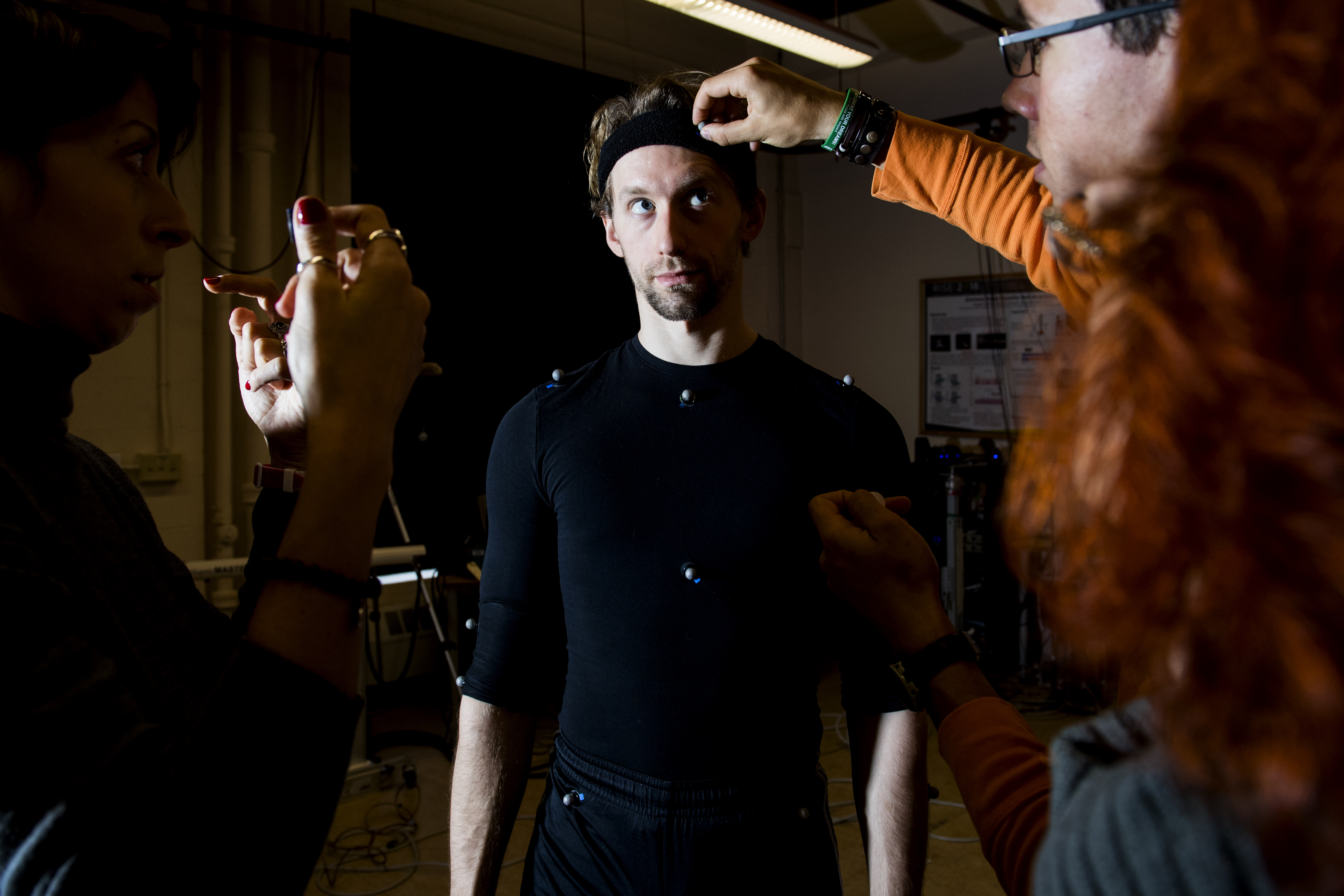
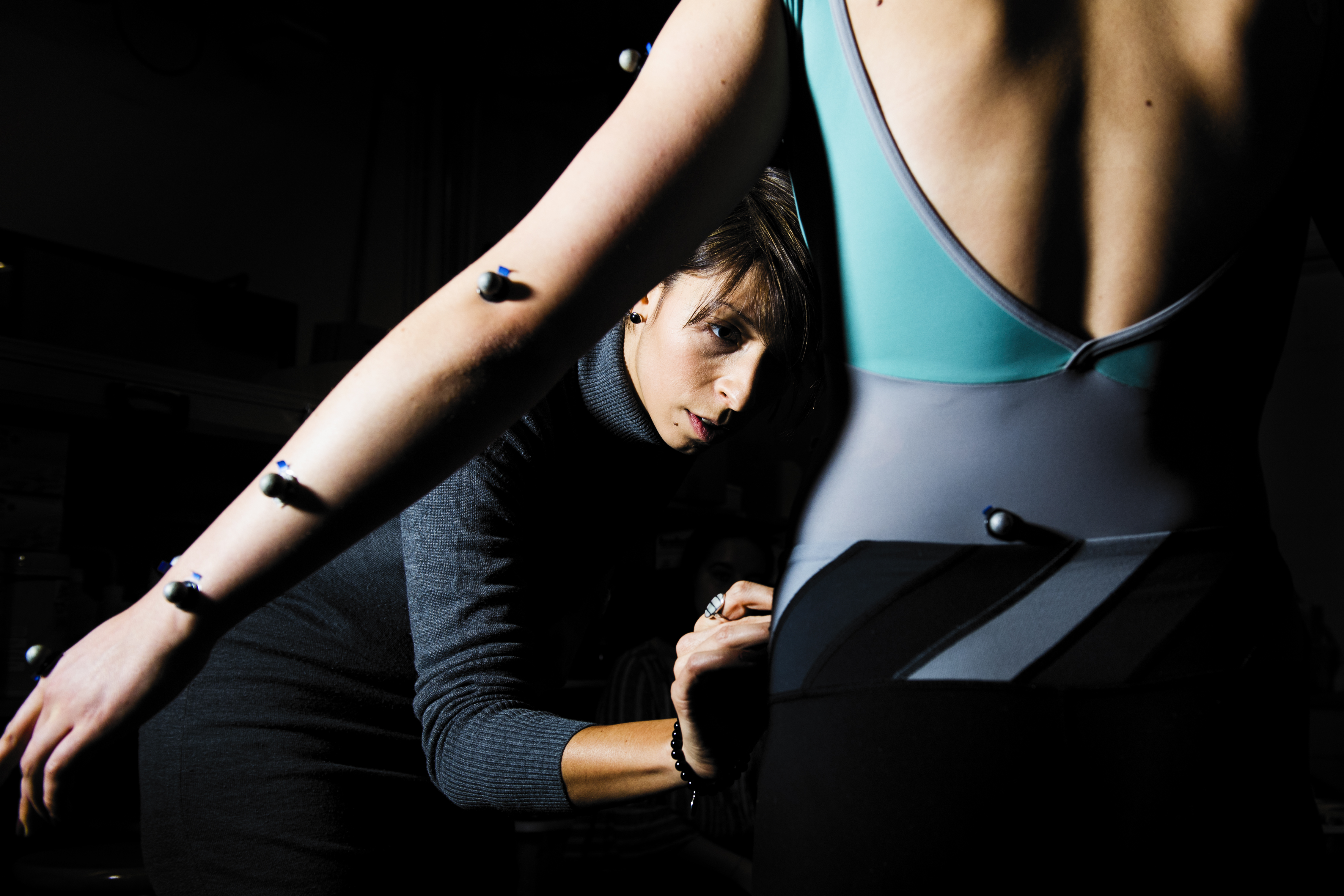
(These would later serve as markers for Sternad and Russo to more easily track the body movements of the dancers.) Then Yocum and Herfindahl sprung into different positions so Sternad and Russo could get an idea of which ones would work best for the study.
The dancers moved to each position as if spring-loaded, often standing on nothing more than the ball of one foot.
Their movements displayed a compelling case for their expertise in balance.
Throughout their study, Sternad and Russo will put the dancers through a balance endurance challenge of sorts. The ballet dancers will need to stand still on a narrow beam, walk on the beam, and then do both again with the help of ski poles.
“We want to learn what role support plays in balance,” said Russo, who added that the findings could have implications for people who use canes.

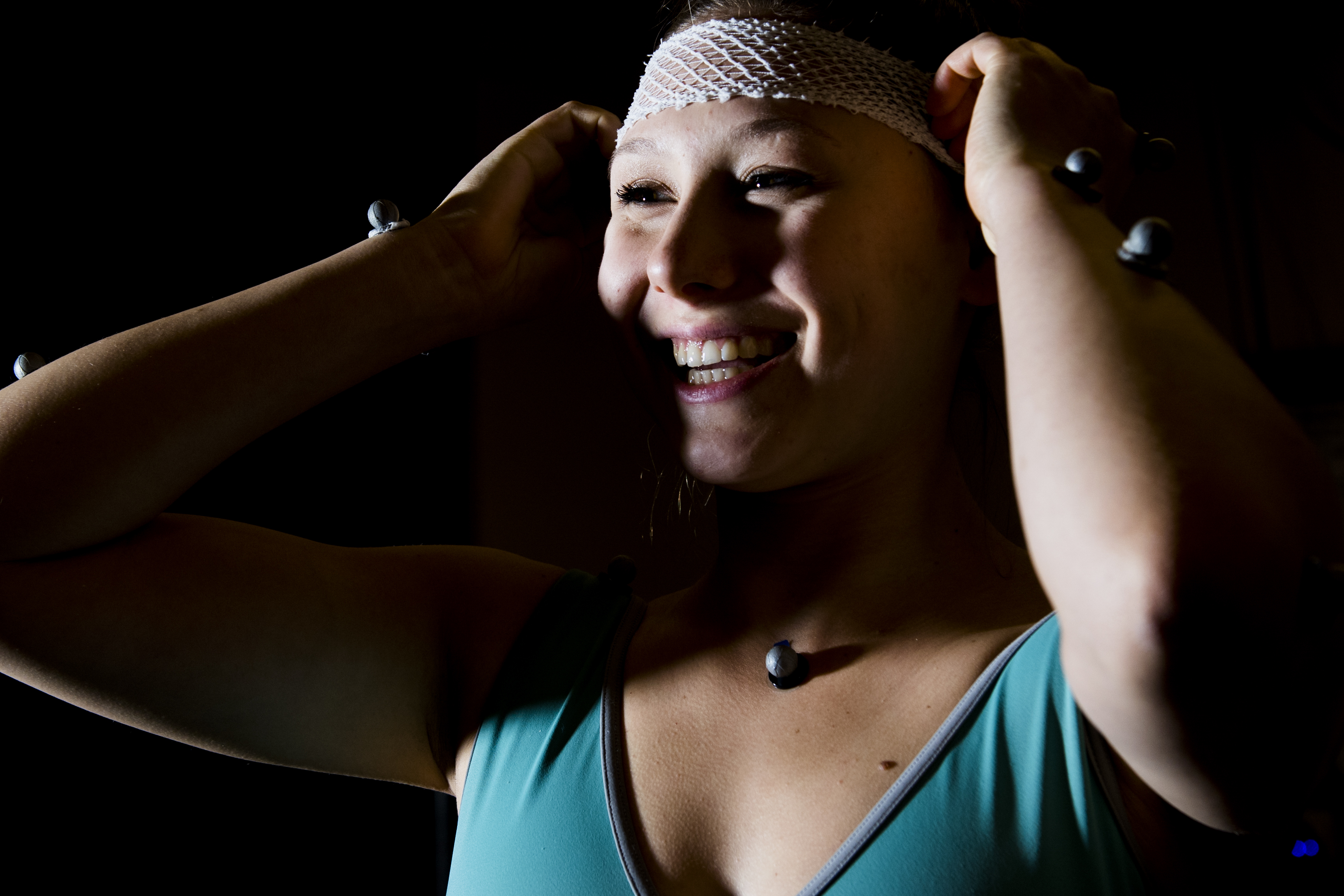
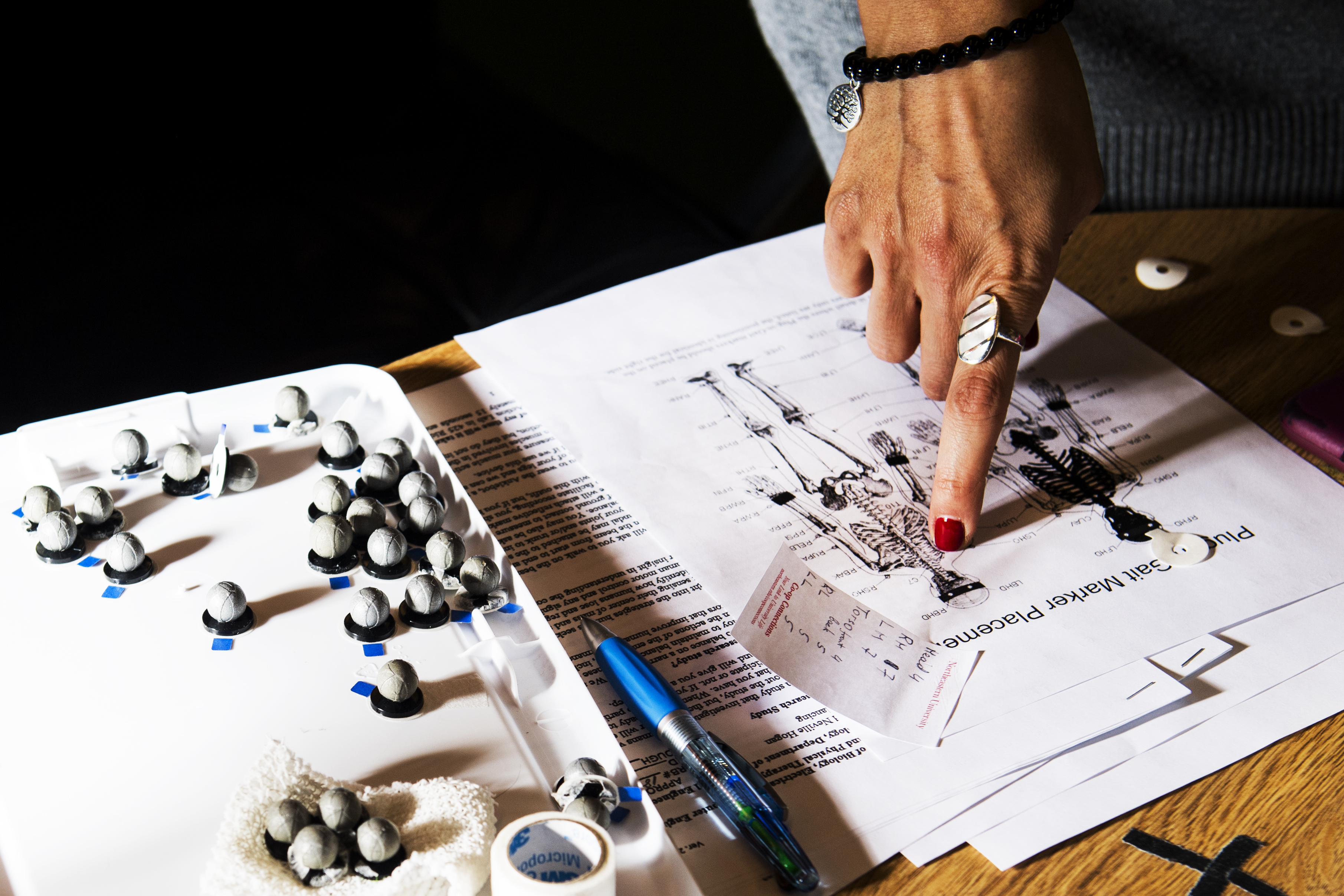
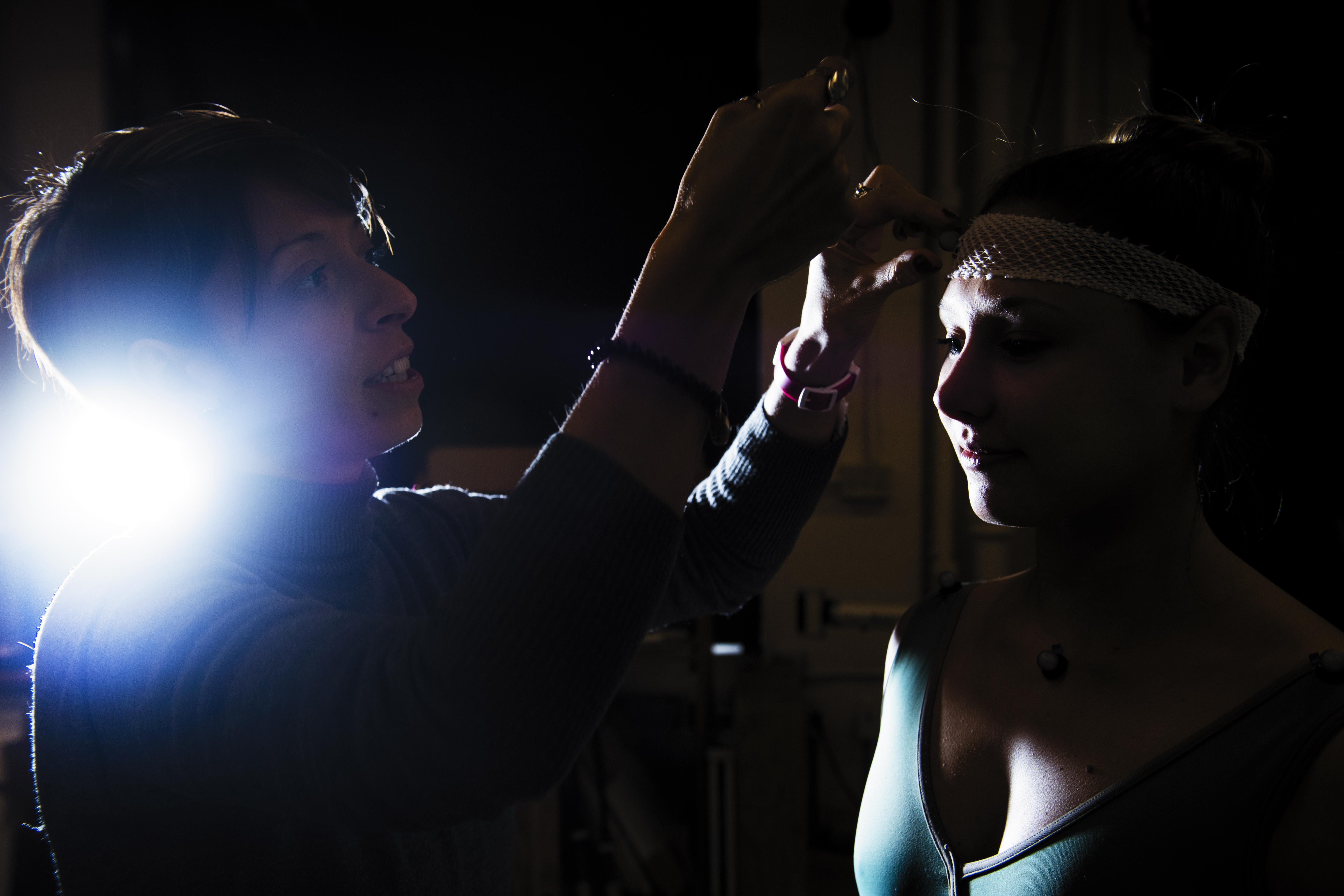
The researchers are using pressure-sensitive pads on the ground to measure the amount of force exerted by the dancers and the would-be cane in each exercise. They’re also recording the dancers’ movement with 12 cameras positioned all the way around the room.
The recordings will help them uncover the dancers’ centers of mass—the ever-shifting balance point in the body at which weight is equally distributed in all directions—as that point changes with each exercise. Studying how the center of mass changes will help the researchers understand how the body brings itself back into balance, Russo said.
The research could help medical professionals devise better rehabilitation practices or help engineers build robots that can balance themselves, a surprisingly tricky feat, Sternad said. The models they’ll build from the data they gather of the ballet dancers are also “fundamental” to understanding human balance, Sternad said.
“What are the limits of human performance when it comes to balance?” Sternad asked. “These dancers constitute a practical limit. This is foundational research.”
For media inquiries, please contact media@northeastern.edu.





